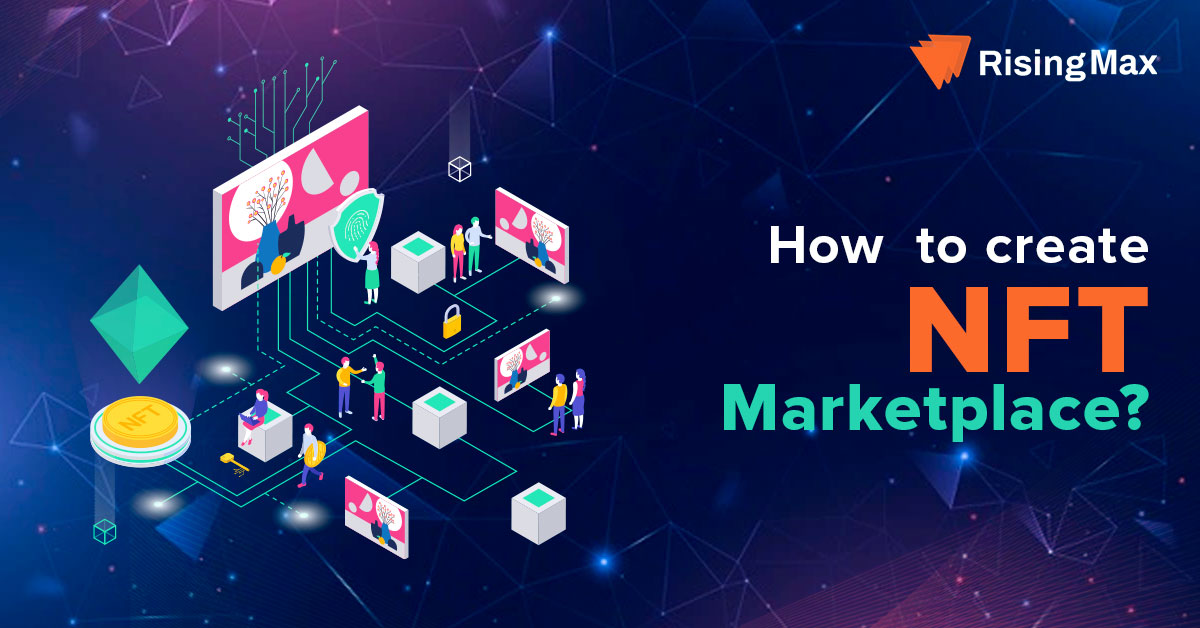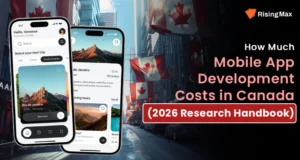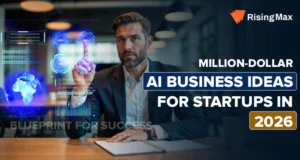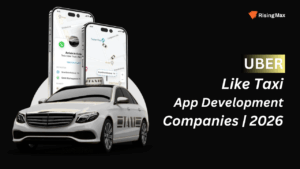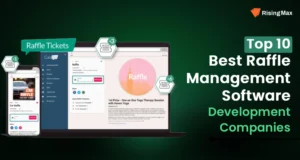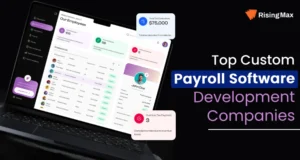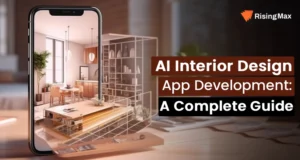Before we dive into how to establish an NFT marketplace with minimal work or in a short amount of time, we’ll go over the fundamentals. Almost every investor heard about Non-Fungible Tokens (NFTs), which have recently made a significant splash in the global cryptocurrency market. Many conventional financial institutions and media outlets also covered it, resulting in a significant increase in the value of these unique crypto-collectibles and increased investor trading.

Let’s Take A Look At NFT!!
What Is NFT?
When one-of-a-kind digital artwork linked to the Blockchain is referred to as a “non-fungible token,” or NFT for short. Texts, photos, audio recordings, digital artworks, domain names, trade cards, and in-game objects are some of its examples. Each NFT item is one-of-a-kind, and we can’t replace it with anything else. This is why such assets are referred to as “non-fungible tokens.” Any non-fungible item, such as a collectible painting, can be evaluated. You could potentially have a Mona Lisa wallpaper on your phone, but it will never be as original or valuable as Leonardo da Vinci’s masterpiece, which is currently on display at the Louvre Museum!

Simply, the NFT deals with one of the most significant shortcomings of the digital environment in terms of creativity. It was always difficult to track out the original inventor. This deterred small artists and musicians because they were always afraid that their work would be stolen without them receiving recognition.
They realized it was a game-changer when NFTs arrived. Artists are now able to sell art online as an NFT to a collector, and some of the world’s most well-known crypto artists have sold their work for as much as $69 million. Musicians are in the same boat. There may be multiple copies of the same artwork or music. Because of blockchain technology’s immutable record-keeping capacity, it is always possible to track down the original owner.
NFT coins are based on the Ethereum network and are created under the ERC-721 standard. The standardization of NFT issuance promotes greater interoperability or the ability of blockchains to communicate with one another. Hence these non-fungible tokens can be used in various decentralized apps.
Related Article
What Is The NFT Marketplace?
Web3 application that concentrates around selling and buying any type of non-fungible token, is qualified as an NFT marketplace (NFT). As a result, there might be a variety of NFT marketplaces, such as one that is open to the general public and allows anybody with a crypto wallet to buy and sell NFTs. On the other hand, certain NFT marketplaces are closed to the general public. These only enable a specific firm or brand to sell their NFTs, and they don’t allow users to list their NFTs.
OpenSea is one of the most popular markets for NFT, or virtual assets, with a wide range of GIFs, animations, and basic graphics, and whose authors can earn millions of dollars by selling some of these works of art.
The function of NFT marketplaces in bringing blockchain technology to artists and producers has been compared to that of Prometheus. Any artist can construct their own NFT on the marketplace and sell their work using NFT marketplace platforms.
NFT Marketplace’s Features
The marketplace platform should be jam-packed with features that make it simple for both the artist and the customer to complete the desired action.
The Store’s User Interface
The marketplace’s interface is the first thing that catches the consumer’s eye. The user interface should be intuitive, and it should provide a thumbnail of the creation in a way that piques the consumer’s interest. At the same time, do not forget the number of things displayed on the screen for sale.
The user interface should be optimized for various screen sizes and take into account the consumer’s natural movements.
Options For Searching And Filtering
The consumer should be able to simply find and filter out the things they want to buy among the clutter of listings. It can be filtered by the artist, the focal point of art, or the sort of production using keywords or tags.
The date last displayed, the increasing or decreasing sequence of pricing, and auctions versus direct buying should all be available for filtering. It’s worth remembering that the easier a platform makes it to persuade a customer, the more money it makes.
Creators’ Listings
Consumers must have a pleasant experience with the UI, and artists should find the interface simple to create their listings. They should be able to upload the artwork, create a token for it, name it, establish a price, and decide whether it will be auctioned or advertised for direct purchase. Although this phase appears to be straightforward, it necessitates much research before the artist decides on their invention’s pricing and type of listing.
Purchasing An NFT
Both the inventor and the consumers should have no trouble purchasing the NFT. The customer should be able to make a rapid payment from the marketplace’s cryptocurrency wallet. After the platform gets its commission for facilitating the transaction, the creator should be able to profit rapidly from the sale.
Wallet For Cryptocurrency
As you may know, the crypto wallet is an important part of the NFT marketplace ecosystem. The wallet should be extremely safe and capable of handling various cryptocurrencies. It’s worth remembering that, like a cryptocurrency exchange, the NFT marketplace has a degree of centralization, and one of the unavoidable consequences of centralization is a reduction in the magnitude of security. As a result, simple yet effective measures like two-factor authentication and multi-signature login should be used to protect your crypto wallet.
Ratings And Reviews
Reviews and ratings are critical in motivating producers and directing clients to the correct types of creators. The creator should be graded based on the type of art they create, the complexities involved in creating it, the conceptual strength behind it, and the value for money they provide. The creator should also be able to give the client a rating based on their interactions and transactions with them.
How To Make NFT Marketplace?

Determine Your Target Audience
Selecting a specific demographic and specialization can help you to get your NFT marketplace development project out on the right foot.If you have a broad idea, talk it over with developers to establish a strategy and estimate the time frame for launching the marketplace. Experts recommend focusing on a vertical market rather than a horizontal one.
Creating User Interface Design
The development of UI design is the most important step in developing any web product. When users first visit your platform, the UI design is the first thing they see. So, we focus on constructing the best user interface design that your users can easily access. After examining all parts and purposes of the marketplace development, professionals create the best user interface to attract users.
Choosing Architecture of the NFT Marketplace
We develop the NFT markets based on microservice architecture, which gives the best user experience and allows platforms to run at best. The microservice design allows the application to be updated or even fixed without redeploying the entire program. The microservice architecture consists of several loosely connected and independently deployed components that make up an application. If a single microservice goes down in a large application, it won’t affect the rest of the services.
We can scale the needed services at any time because services are distinct. These are based on a smaller codebase, so they can be deployed more quickly. Microservices make large-scale solutions more manageable and enable flexibility, productivity, and scalability. Microservice architecture is used by even the biggest companies like Amazon, Netflix, Uber, and others.
Inserting NFT Tokens
We create NFT tokens on a variety of blockchain standards, including the 721 and 1155 standards. After selecting the blockchain network, the NFT requirements are determined, keeping the patron in mind. The token has been designed to interact with all of the software’s primary functions. The NFT token is created to a high standard and involves a number of steps, including token minting, domain name construction, security inclusion, and setting up the token address. The produced NFT tokens will be provided with end-to-end encryption compliant with advanced encryption standards, ensuring that your NFT remains unique throughout its lifespan.
Developing NFT Smart Contracts
The NFT marketplace is based on a number of functions, each of which is built using different smart contracts. From the listing to the trade of the NFT, all of the processes that operate in the marketplace rely on smart contracts. Because the NFT marketplaces are decentralized, smart contracts are designed to ensure that transactions and auctions go smoothly, as well as to verify and other purposes. After studying the major characteristics and functionalities of the marketplace, professionals create smart contract. These smart contracts are self-executing programs that perform specified activities, and they record all of the metadata associated with each and every NFT generated.
Inserting NFT Minting Attributes
The NFT Minting can be divided into two categories.
1) Single-mode NFT Minting: Smart contract code for ERC721 (Non-Fungible Tokens) that are one-of-a-kind and cannot be replicated or changed.
2) Multi-mode NFT Minting: For ERC1155 (Semi-Fungible Tokens) that may be replicated, a Smart Contract code can be produced.
3) Smart Contracts: Smart contracts (self-executing codes) for single-mode NFT minting and multi-mode NFT minting processes can now be developed and integrated on the platform’s backend end, based on the client’s business requirements.
Database and IPFS NFT Storage Configuration
For business and research, database storage and IPFS are required. The database ensures consistent data and data repetition and efficient query execution, and high-performance usage. IPFS is a widely used file storage system that automatically versions and backs up files.
A well-designed database ensures that information can be accessed and retrieved quickly. It’s well-known for its secure file sharing, fast streaming speed, and encrypted messaging. Team of professionals has completed the integration of the IPFS NFT Storage configuration and database into the NFT Marketplace.
Using Test Cases To Test The Project
The testing step is critical in the development of the NFT Marketplace since it ensures that the product is of high quality. This phase begins once all of NFT Marketplace’s basic capabilities have been developed and integrated into the platform’s backend. The entire product has been put through a series of tests in order to find defects, malfunctions and resolve underlying concerns.
This phase includes many testing methodologies to ensure the platform’s functioning flow. It may be categorized in two important ways: the verification and validation stages, which improve the platform’s quality and increase client loyalty.
Testnet Release Or Final Deployment
The NFT Marketplace will be migrated to the testing networks once the entire product has been tested to monitor real-time activities such as platform speed and module functionality flow and receive client feedback. This also confirms the platform’s real-time process.
This is an extremely important step that should never be skipped because it ensures that the product is ready to use. After the preceding processes are completed, the fully tested, resilient, bug-free, fully working NFT Marketplace is placed on the client’s production server and available to the public.
It cannot be denied that the NFT business concept is still in its infancy. There are a few well-established and well-known NFT markets that have demonstrated how to develop a flawless NFT marketplace by embracing the best of their features and, of course, eliminating their defects.
Things To Consider While Creating an NFT Marketplace
We’ve already figured out how to create an NFT Marketplace. Now, consider the following criteria when developing an NFT marketplace app like OpenSea:
Discretion
Your NFT marketplace must be transparent to give users a clear view of all transactions. The Blockchain network ensures a smooth transaction experience and an error-free payment mechanism.
Safety and security
It’s a powerful feature in an NFT marketplace that allows traders to swap tokens. The built-in security protects traders against transaction loss and other needless functions.
Decentralization Of Power
It enables you to replicate and share all data across several Blockchain networks. When a new block is introduced, the network’s Blockchain is updated to modify.
Monetization Model
It would be beneficial to take this into account when developing an NFT marketplace. OpenSea, for example, does not charge a fee for listing. However, during sales, the platform deducts 2.5 percent from the good’s price.
Smart Contracts
When it comes to setting up smart contracts, there is no need to pay a commission charge. To avoid fraud and decrease intermediaries, you can do so by signing the contract online.
An NFT Marketplace Provides A Variety of Advantages
Content creators may easily monetize their work because they are not reliant on middlemen or under the influence of large technology companies.
- Greater return on investment – Depending on the level of investor demand, certain NFTs can sell for millions of dollars. But because of crypto-collectibles scarcity, the value grows dramatically (limited supply).
- The powerful smart contracts and blockchain networks provide instant proof of ownership verification for NFT purchasers.
- Quick scalability of the NFT marketplace – Benefiting entrepreneurs by adding more digital collectibles and attracting cryptocurrency investors from all over the world.
- A high level of security — We adopt necessary measures to prevent copyright infringement and content piracy connected to digital assets.
If you want to create your own NFT Marketplace then you can reach us any time. We at Rising Max work very hard to ensure providing the best software to you.

What Does It Cost to Launch an NFT Marketplace?
The market’s performance determines the price of creating an NFT Marketplace. You’ll need to spend more money establishing the NFT art marketplace if you want to build a comprehensive platform. There is no guarantee of security if you use a ready-made solution, and the product will be dependent on the platform from which you receive the key. However, in this case, the cost will be lower. On the other hand, you could hire a software development company to create a custom app for you. The experts will design the marketplace from the ground up, create a user flow, build functionality, add features, and create a user flow. That will be extra ordinary.
FAQ On NFT Marketplace
NFT marketplace is a decentralized platform that allows users to purchase, sell (direct or Auction), and store Non-fungible tokens. NFT market focuses on specific digital assets such as artwork, gif, artwork, and animations.
Embarking from scratch, programmers construct NFT marketplace development solutions that match the company’s needs. They deliver software infrastructure, implementation requirements, branding, and all other aspects after considering the organization’s goal in mind, so that organization can use it effectively. Custom development is the most practical method for creating your own Blockchain and producing NFT Marketplace.
Some of the best NFT marketplaces in the Crypto Industry include OpenSea, Rarible, SuperRare, Foundation, and Nifty Gateway. Other notable NFT marketplaces include AtomicMarket, Axie Infinity, and Sorare.

